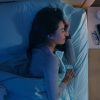Why BluTech Lenses?
BluTech Lenses have a special blue-blocking technology that helps limit the number of blue rays that enter your eyes. Because too much blue light is harmful to our bodies, it’s essential that we limit exposure. How are BluTech Lenses different? BluTech lenses don’t simply filter blue light, but it blocks blue light and filters out some green, yellow and red portions of the color spectrum. Traditional blue blocking lenses distort color vision, but the science behind BluTech Lenses allows the [...continue reading]




